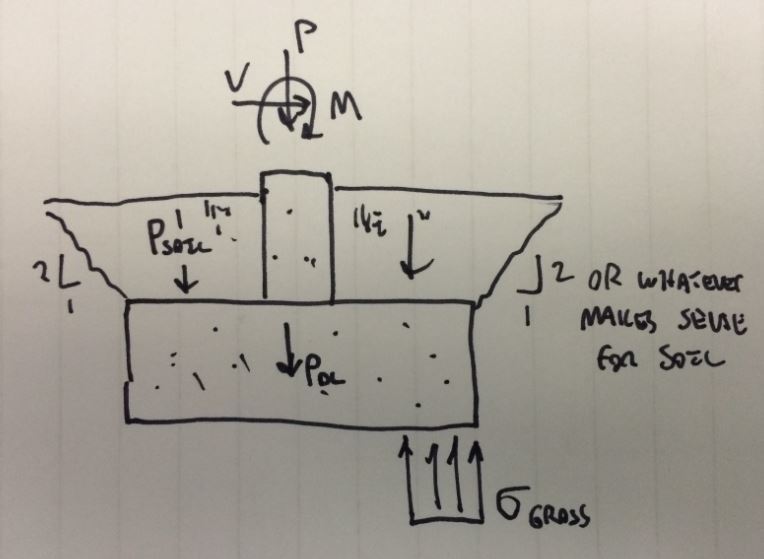I'm considering the design of a footing for a 25' tall, 24" OD process tower that only weighs 7500 pounds. It'll be on a large footing mainly due to the overturning effect of wind loading. However, I'm trying to figure out how to get the eccentric loading bearing pressure calculation to work out for the foundation. I have P=8k and M=30k-ft...overturning checks fine, but bearing pressure calcs are making this have a huge footing to get enough bearing contact. I know it has to have a huge footing since it's lightly loaded anyway, so just a little applied moment will create uplift under some of the footing. Is there any alternative to having such a massive footing for such a small tower?
I recently considered a similar footing but for a heavier similar tower. However, I think this smaller tower will have to have a larger footing due to the eccentric loading issue.
I recently considered a similar footing but for a heavier similar tower. However, I think this smaller tower will have to have a larger footing due to the eccentric loading issue.

